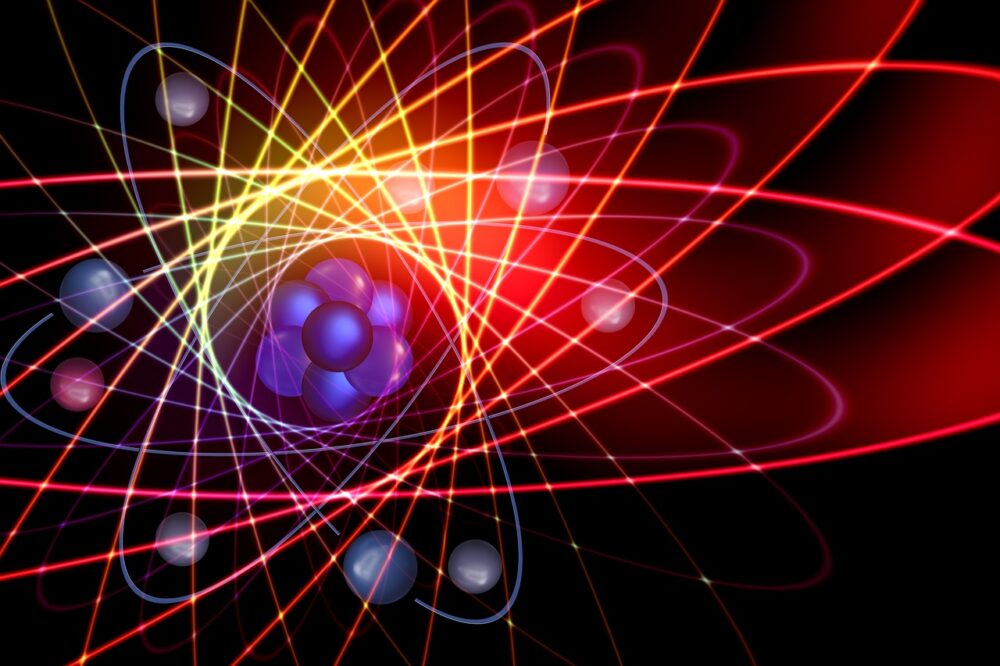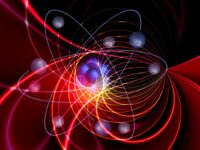Humans love order. We have a natural ability to see patterns in everything around us. It’s how we gather data and draw conclusions. Think about the work you do in school; you read history to see how it repeats itself, and you redo experiments to find repetition in the results. We even teach young children pattern identification with games where they match shapes with holes. We spend our lives trying to figure out how to find order in chaos. For this reason, things that do not have a recognizable pattern disturb us.
Humans love order. We have a natural ability to see patterns in everything around us.
Quantum systems are a prime example of chaos because they seem to work almost randomly. For example, imagine leaving a glass of ice water on the table and returning to a glass of nearly melted cubes one minute and a completely frozen glass the next. In a classical system, that ice water would only become room temperature water. In a quantum system, the water can reach a variety of states depending on its own initial freezing temperature, not the warm temperature of the room. For a long time, there was no explanation for this behavior. However, Nicolò Defenu, a postdoctoral researcher at the ETH Zürich Institute for Theoretical Physics, has uncovered part of the mystery.
It has long been known that long-range systems, systems where individual particles don’t just interact with their neighbors but particles far away, cannot be described with the classical thermodynamic limit procedure. Whereas a glass of ice water in a room would eventually become a glass of room temperature water as it reaches equilibrium, long-range quantum systems are less likely to achieve such balance. Instead, they reach metastable states, where the system relaxes into a long-lived state of energetic quasi-equilibrium. The metastable particle has an energy level higher than the lowest possible energy level, known as the stable ground state, but maintains a long lifetime, similar to equilibrium at the ground state. However, the metastable state is unstable; any disturbance will likely cause the particle to change energy levels. Similar to how you can balance a tower of cards, it will fall apart at the slightest disturbance.
Experts associate metastable states with Heisenberg’s uncertainty principle, which establishes the inability to know the exact location and momentum of a particle-based on initial conditions. However, experts can predict the probability of each potential location using probability distributions based on the energy level of the particle. In fact, the number of stable energy states of a quantum system corresponds to the number of degrees of freedom — the number of independent variables that define a particle’s state — and thus to the number of potential locations of a particle in a long-range system.
Previously, the widely accepted theory stated that particles have an infinite number of probabilities. Ergo, particles have an infinite number of possible locations, which makes their return to their initial state unlikely. Because the infinite combinations of probable locations lack distinction, experts defined the energy state of a quantum particle as all possible states on an indiscrete spectrum. However, after reducing the problem into one dimension, Defenu calculated how different particles oscillating positions interacted. These interactions between oscillating systems, known as couplings, remained discrete, meaning that what was originally thought to be a spectrum remains distinct. As such, Defenu displayed that each of the states in which a particle can be actually remains discrete, meaning that the particles are more likely to return to their distinct initial positions while changing locations.
Previously, the widely accepted theory stated that particles have an infinite number of probabilities. Ergo, particles have an infinite number of possible locations, which makes their return to their initial state unlikely.
This realization helps us to understand how metastable states actually work. Additionally, it means that, up to the thermodynamic limit, long-range systems present finite recurrence times. This is directly connected to the Poincaré recurrence theorem, which states that some discrete-state dynamic systems, such as long-range systems, will eventually return to their initial state after a finite period.
With this understanding of quantum probabilities and equilibrium, we can improve quantum computing and simulations. We may be one step closer to discovering order in something that was thought to be chaos.
Sources:
PNAS (2021). DOI: 10.1073/pnas.2101785118
Results in Physics (2017). DOI: 10.1016/j.rinp.2017.08.055
Image courtesy of Pixabay






